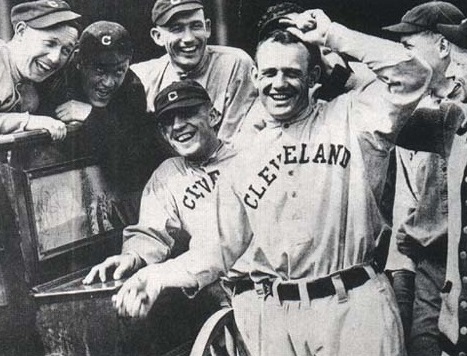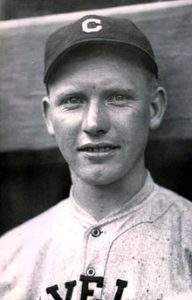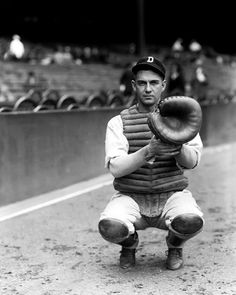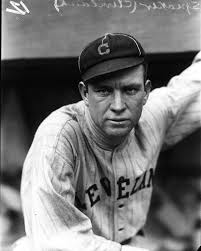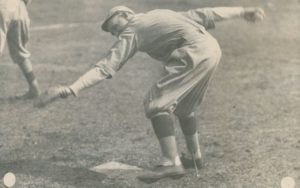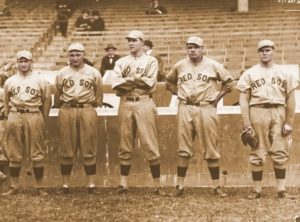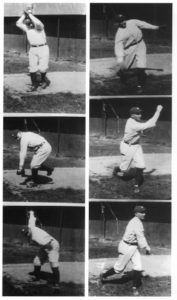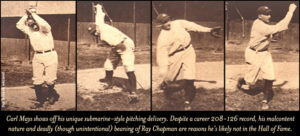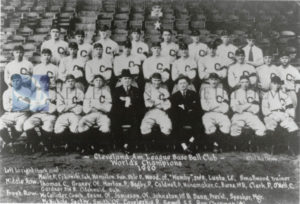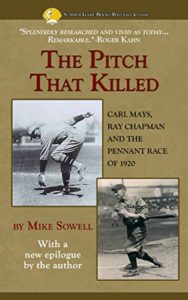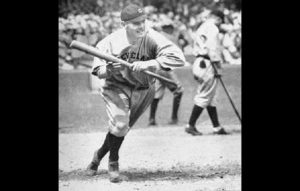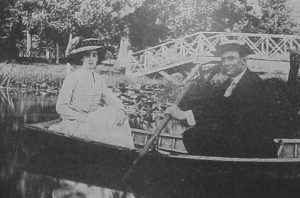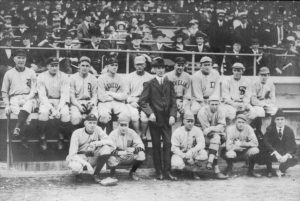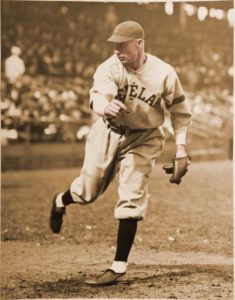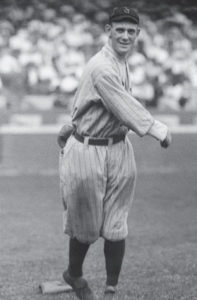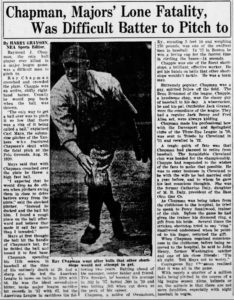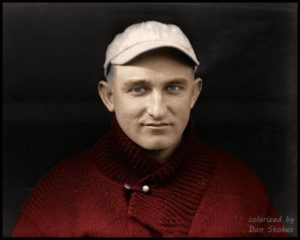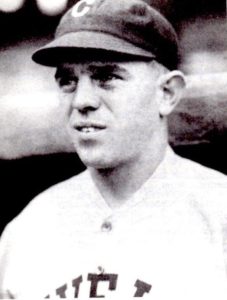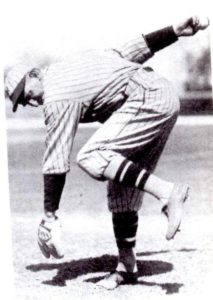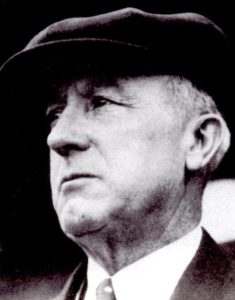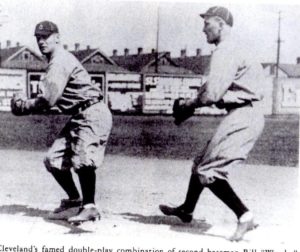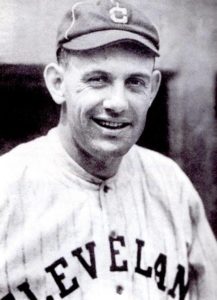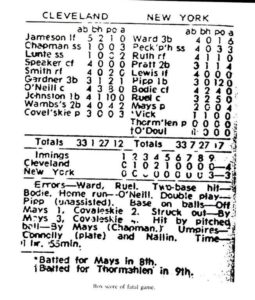Baseball History Comes Alive Now Ranked #2 by Feedspot Among All Internet Baseball History Websites and Blogs!
Guest Submissions from Our Readers Always Welcome!
Subscribe to Baseball History Comes Alive! for automatic updates (sign-up block found in right side-bar)
As a Free Bonus for subscribing, you’ll get instant access to my two Special Reports: Memorable World Series Moments and Gary’s Handy Dandy World Series Reference Guide!
Photo Gallery
Click on any image below to see photos in full size and to start Photo Gallery:
Baseball’s Darkest Day: The Tragic Death of Ray Chapman
It happened ninety-nine years ago today. August 16, 1920 was a dark, overcast day. The Yankees were playing the Indians at the Polo Grounds. It was an important game as both teams were in the pennant race.
All the elements for a tragedy were in place: With the late afternoon start, the game was almost played in twilight conditions. The surly submariner and known head-hunter Carl Mays was on the mound for the Yankees. At bat was the Indians’ popular shortstop, Ray Chapman, who liked to crowd the plate. In an era long before balls that touched the ground or became soiled were routinely removed, the game ball was darkened and discolored. The count was 1-1.
In the featured photo above, we see the popular “Chappie” having fun with some of his Indians teammates.
Take a good look at the photo in the gallery of submariner Carl Mays on the mount. I included this one because, with the overcast background, this is probably very close to the image of Mays that Chapman saw as he awaited the third pitch of the at-bat – the pitch was would kill him.
On that fateful day, Muddy Ruel was the catcher; the umpires were Tom Connolly at home plate and Dick Nallin on the field. Newly acquired Babe Ruth was in right field for the Yankees, and Wally Pipp was at first.
Mays’ next pitch struck Chapman with a high inside fastball on the left side of his head just above the ear. Eyewitnesses recounted that Chapman seemed frozen at the plate and never moved out of the way. With the overcast conditions and the darkened ball, did he even see the pitch? We’ll never know.
The sound of the ball smashing into Chapman’s skull was so loud that Mays thought it had hit the end of Chapman’s bat, so he fielded the ball and threw to Pipp at first. Chapman staggered at the plate, and collapsed near second base as teammates helped him off the field. He was rushed to St. Lawrence hospital in Manhattan where his condition deteriorated. At around 10 PM, a decision was made to operate. It began at 12:30 AM and lasted just a little over an hour. A three-and-a-half inch piece of skull was removed from Chapman’s left side. His condition went downhill after 3 AM.
Raymond Johnson Chapman breathed his last breath at 4:40 AM, on August 17th, 1920. He was 29 years old.
Ray Chapman was born in Beaver Dam, Kentucky. He broke into the major leagues in 1912 with the Cleveland Naps. He led the American League in runs scored and walks in 1918. A top-notch bunter, Chapman is still sixth on the all-time list for sacrifice hits and he holds the single-season record with 67, set in 1917. Chapman was also an excellent shortstop who led the league in putouts three times and assists once. He batted .300 three times, and led the Indians in stolen bases four times. In 1917, he set a team record of 52 stolen bases, which stood until 1980. He was hitting .303 with 97 runs scored at the time of the fateful beaning.
The jovial, good-natured “Chappie” was one of the most popular players with fans, teammates, and even opposing players. It was said he had friends in every city. He was one of the few players who Ty Cobb considered a friend. On the field, Chapman was known as a no-nonsense, non-stop hustler. Before the 1920 season, he married his long-time sweetheart, Katie Daly, daughter of a wealthy Cleveland businessman. The plan was for Ray to retire at the end of the 1920 season to devote himself to the family business and to raise a family.
Carl Mays, in contrast, was a surly, mean-spirited sort who had few friends in the game. A noted head-hunter with an exaggerated submarine delivery, he sometimes scraped his knuckles across the mound as he followed through with his deceptive motion. He was often among the league-leaders in hit batsmen.
Thousands of mourners were present for Chapman’s funeral at the Cathedral of St. John the Evangelist in Cleveland. Chappie’s best friend, Jack Graney, became hysterical at the service and had to be restrained. His manager and good friend Tris Speaker became emotionally distraught and collapsed while he was visiting Katie’s parents’ house. He was unable to attend the service and went into a deep depression. In tribute to Chapman’s memory, Cleveland players wore black arm bands for the rest of the season.
The Indians eventually recovered from the traumatic incident and went on to win the pennant and the World Series.. Rookie Joe Sewell took Chapman’s place at shortstop, starting on his Hall of Fame career. Carl Mays went on to have a 208-126 career in baseball. Although his .621 winning percentage is nearly the same as Carl Hubbell’s, and is slightly better than Bob Feller’s, there has never been any movement for his induction into the Hall of Fame. His career lasted until 1929 and then he was a scout for 20 years. He died in 1971. For the rest of his life, he insisted that he did not throw at Chapman and that the incident never weighed on his mind.
-Gary Livacari
Photo Credits: “The Pitch That Killed,” by Mike Sowell; The Deadball Era web site, maintained by Frank Russo; and Google search. The beautiful colorization of Carl Mays in the photo gallery was done by Don Stokes.
Biographical Information: From the two sources mentioned above, and excerpts edited from the Ray Chapman Wikipedia page.
Shop MLB.com. The Official Online Shop of Major League Baseball.
Check out my two books, both now available on Amazon in e-book and paperback: “Paul Pryor in His Own Words: The Life and Times of a 20-Year Major League Umpire”and “Memorable World Series Moments.” All profits go to the Illinois Veterans Foundation.
Cast Your Ballot in Our New Blog Question: Who Else Belongs For the Hall of Fame?
We are a participant in the Amazon Services LLC Associates Program, an affiliate advertising program designed to provide a means for us to earn fees by linking to Amazon.com and affiliated sites. Click here to view Amazon’s privacy policy

